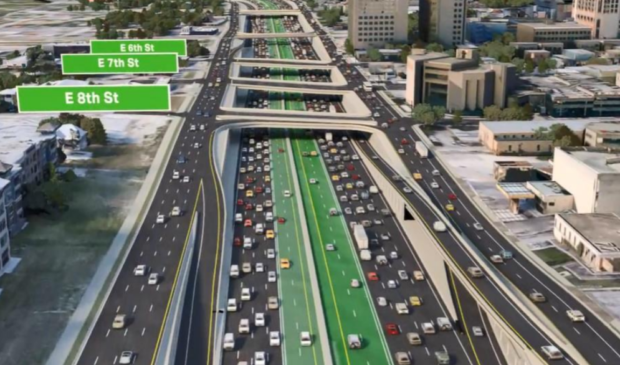CAMPO dedicates money for I-35 expansion
Wednesday, May 8, 2019 by
Ryan Thornton The Capital Area Metropolitan Planning Organization Transportation Policy Board clarified its priorities Monday evening by approving a resolution allocating $500 million of its Category 2 and 7 10-year budgets to the Texas Department of Transportation for highway congestion relief projects.
The bulk of the money, $400 million, was dedicated to the so-called Capital Express Project for construction of additional non-tolled managed lanes on Interstate 35 between State Highway 45 North in Round Rock and SH 45 SE just north of Buda.
Board members were united in their enthusiasm for the investment to reduce congestion on the interstate, with Mayor Steve Adler affirming the I-35 project as the region’s singular, most important priority.
The region will be competing with other projects across the state for Texas Transportation Commission funds to cover the balance of the project’s nearly $8 billion total, including $5.6 billion in construction costs alone.
The roughly 30-mile stretch of I-35 between Round Rock and Buda is the state’s third-most-congested corridor and was listed as one of the nation’s 19 “freeways without futures” by the Congress for New Urbanism earlier this year.
Rather than scrapping the highway, CNU recommended this year that Austin follow the 2013 suggestion of Austin architect Sinclair Black to “cut and cap” the interstate in the vein of the Woodall Rodgers Freeway-turned-community park in Dallas.
According to Marisabel Ramthun of the TxDOT Austin District, the design of the Capital Express Project through downtown – featuring at-grade frontage roads with depressed general purpose and managed lanes between Martin Luther King Jr. Boulevard to Cesar Chavez Street – “provides downtown Austin the opportunity to construct the cap in the future.”
For now, however, the Capital Express Project itself doesn’t yet have a construction timeline attached to it.
CAMPO Executive Director Ashby Johnson said there will be many opportunities for the public and for CAMPO to get involved in the design and final terms of the project.
Pending funding approval by TTC, the item would then be added to the Transportation Improvement Program, requiring public outreach and further action by the board. If it makes it that far, Johnson said the public would again be consulted in the project development and environmental analysis phases.
Geoffrey Tahuahua, speaking on behalf of the Real Estate Council of Austin, said proposals like the Oak Hill Parkway and the Capital Express Project “are essential for our region to address congestion and increase mobility.”
No community members signed up to speak in opposition to the project.
Carrying the I-35 project into the regional transit discussion that followed, Travis County Judge Sarah Eckhardt said she’s hoping the new infrastructure will provide a boost to transit lines able to make use of the additional lanes, reminding the board that the managed toll lanes on MoPac Expressway have been a “wild success” for express bus service. “I’m looking forward to repeating that success with 183, 183A, 290 East, 71, and most especially I-35 with this vote today,” she said.
During that discussion, Capital Metropolitan Transportation Authority CEO Randy Clarke remarked that in contrast to our financial support for road projects, among “all of (Austin’s) competitive cities, we are the last one to do a significant public transit infrastructure investment.”
Clarke agreed, however, that even if this project does not involve dedicated transit lanes, the new I-35 design creates a “potential for north-south capacity that we don’t have today” because the managed lanes feature “allows for consistency and reliability” that is not currently achievable.
Williamson County Commissioner Cynthia Long motioned to approve the resolution, seconded by Eckhardt.
Rendering of I-35 proposal by TxDOT.
The Austin Monitor’s work is made possible by donations from the community. Though our reporting covers donors from time to time, we are careful to keep business and editorial efforts separate while maintaining transparency. A complete list of donors is available here, and our code of ethics is explained here.
You're a community leader
And we’re honored you look to us for serious, in-depth news. You know a strong community needs local and dedicated watchdog reporting. We’re here for you and that won’t change. Now will you take the powerful next step and support our nonprofit news organization?



